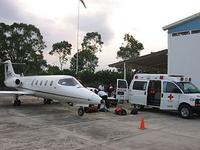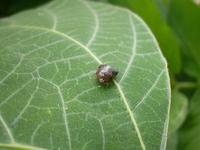-
Office implementing Obamacare avoids furloughs
Gary Cohen, the director of the Center for Consumer Information and Insurance Oversight, said Wednesday that his office will not be furloughing its workers due to the federal budget cuts known as the sequester. His office is in charge of implementing most of President Obama’s healthcare law.
-
-
Preventing bugs from becoming antibiotic-resistant
About 440 000 new cases of drug-resistant tuberculosis emerge annually, causing around 150 000 deaths. New research finds that bacteria can evolve resistance more quickly when stronger antibiotics are used. The rate of evolution of antibiotic resistance speeds up when potent treatments are given because resistant bacterial cells flourish most during the most aggressive therapies.
-
-
Fighting superbugs with a new genre of antibodies
In an advance toward coping with bacteria that shrug off existing antibiotics and sterilization methods, scientists are reporting development of a new family of selective antimicrobial agents that do not rely on traditional antibiotics.
-
-
U.S. hospitals shipping sick immigrants back to their home countries

Hundreds of immigrants who are in the United States illegally end up in the hospital only to find out they will be sent home through a removal system run by hospitals trying to avoid the high cost of treating illegal immigrants.
-
-
New detection test to improve food safety, bioterrorism defense
Sales of chicken products in China plummeted recently during an outbreak of a deadly new strain of bird flu. From bird flu to mad cow disease, numerous food scares have made global headlines in recent years.Scientists develop new detection technique which wouldmake food contamination testing more rapid and accurate. The detection test could also accelerate warnings after bioterrorism attacks.
-
-
Interior Dept. releases progress report on U.S. Water Census
The U.S. Interior Department issued released a report to Congress on the progress of the National Water Census. As competition for water grows — for irrigation of crops, for use by cities and communities, for energy production, and for the environment — the need for the National Water Census and related information and tools to aid water resource managers also grows. The Water Census will assist water and resource managers in understanding and quantifying water supply and demand, and will support more sustainable management of water resources.
-
-
Mississippi man arrested for sending ricin letters to Obama, Sen. Wicker
The FBI confirmed yesterday (Wednesday) that a letter addressed to President Obama was found to contain the toxin ricin. As is the case with all the mail sent to the White House, the letter was screened in a remote mail sorting facility in Anacostia, a neighborhood in southeast Washington, D.C., and intercepted. The FBI arrested a man from Tupelo, Mississippi, on suspicion that he was behind the ricin letters to the White House and to Senator Roger Wicker (R-Mississippi), who lives in Tupelo.
-
-
Experts will meet in September for the bi-annual anthrax research conference
More than 300 scientists and researchers from all over the world who work on Bacillus anthracis, the causative agent of anthrax, and B. cereus and B. thuringiensis, two closely related bacilli, will be heading to Victoria, British Columbia for the Bacillus ACT 2013 conference, which will be held 1-5 September.
-
-
Deadly wheat disease threats global food supplies
Disease-resistant wheat developed over the past half century helped ensure steady world food supplies, but a global research team warns that without increased financial support for disease resistance research, new strains of a deadly fungal disease could leave millions without affordable access to food.
-
-
Invasive kudzu bugs pose greater threat than previously thought

The invasive kudzu bug has the potential to be a major agricultural pest, causing significant damage to economically important soybean crops. Conventional wisdom has held that the insect pests will be limited to areas in the southern United States, but new research shows that they may be able to expand into other parts of the country.
-
-
New bird flu strain adapting to mammals, humans
Influenza virus depends on its ability to attach to and commandeer the living cells of its host to replicate and spread efficiently. Avian influenza rarely infects humans, but can sometimes adapt to people, posing a significant risk to human health. A genetic analysis of the avian flu virus responsible for at least nine human deaths in China portrays a virus evolving to adapt to human cells, raising concern about its potential to spark a new global flu pandemic.
-
-
Population growth a challenge to secure supplies of energy, food, water
Mention great challenges in feeding a soaring world population, and thoughts turn to providing a bare subsistence diet for poverty-stricken people in developing countries. An expert says, however, that there is a parallel and often-overlooked challenge: the global population will rise from seven billion today to almost nine billion people by 2040. Providing enough food to prevent starvation and famine certainly will be a daunting problem.
-
-
Bird flu mutation study offers vaccine clue

Scientists have described small genetic changes that enable the H5N1 bird flu virus to replicate more easily in the noses of mammals. So far there have only been isolated cases of bird flu in humans, and no widespread transmission as the H5N1 virus cannot replicate efficiently in the nose.
-
-
Footwear safety reflectors help in detecting bioterror threats

Tiny versions of the reflectors on sneakers and bicycle fenders that help ensure the safety of runners and bikers at night are moving toward another role in detecting bioterrorism threats and diagnosing everyday infectious diseases, scientists said the other day.
-
-
Arsenic contamination in food and water supplies
After virtually eliminating arsenic as a useful tool for homicide, science now faces challenges in doing the same for natural sources of this fabled old “inheritance powder” that contaminates water supplies and food, threatening more than thirty-five million people worldwide.
-
More headlines
The long view
A Shining Star in a Contentious Legacy: Could Marty Makary Be the Saving Grace of a Divisive Presidency?
While much of the Trump administration has sparked controversy, the FDA’s consumer-first reforms may be remembered as its brightest legacy. From AI-driven drug reviews to bans on artificial dyes, the FDA’s agenda resonates with the public in ways few Trump-era policies have.
